NZXT H230 Silent Case Review
by Dustin Sklavos on September 13, 2013 12:00 PM EST- Posted in
- Cases/Cooling/PSUs
- NZXT
- ATX
- Case
Plugging in and powering on the NZXT H230, there were basically two ways things were going to go: it was going to have adequate airflow and middling acoustic performance, or it was going to have poor airflow and good idle acoustic performance. Given the modest hopes NZXT has for the H230, though, just about anything beyond our stock configuration is probably going to be a bit beyond what this case was intended for.
Unfortunately, even the modest task of cooling a stock Intel Core i7-2700K and an upper midrange video card with an open air cooler instead of a blower is a bit beyond the H230. The GTX 560 Ti we use is rated with a TDP of 170 watts, which is high but not astronomical.
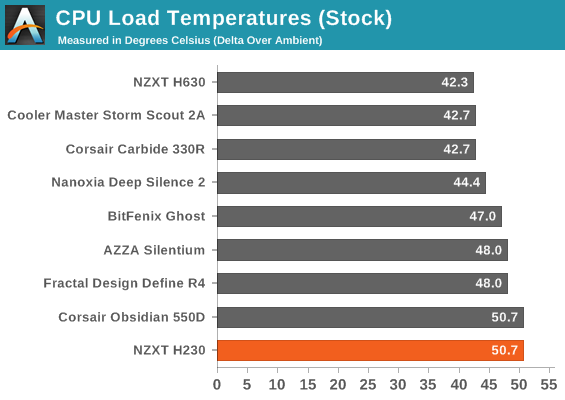
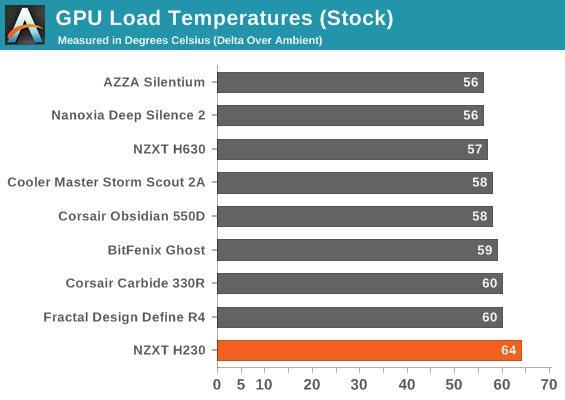

Every other silent case meets or beats the H230 thermally, and this is essentially "easy mode" right now. The cases included are mostly budget; this isn't a murderer's row of hardware but reasonable competition, and it's already not looking good.
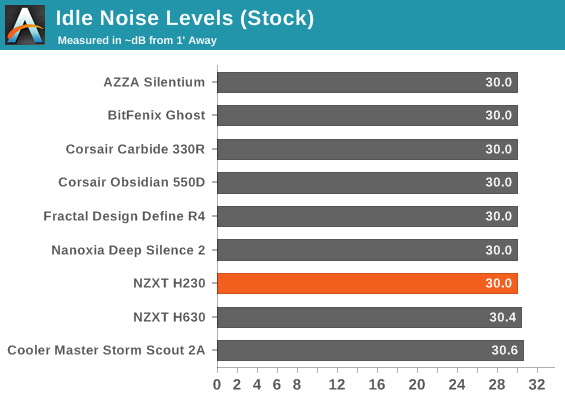
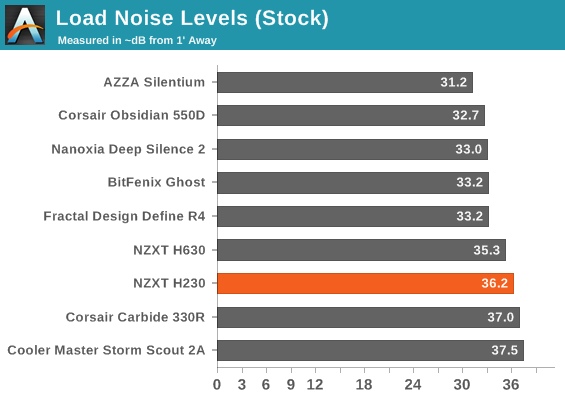
Poor thermals mean loud internal fans, and that's exactly what we run into. The H230 just doesn't have much in the way of cooling capacity, and as a result it's louder than most of the other cases under load.
Overclocking the testbed only made matters for the H230 worse.
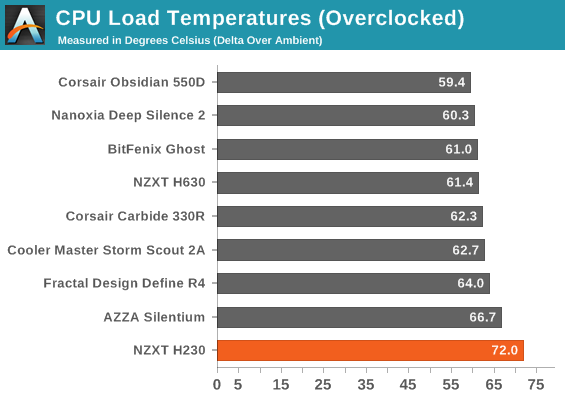
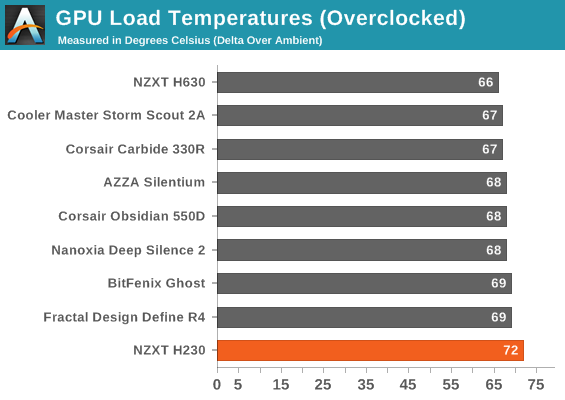
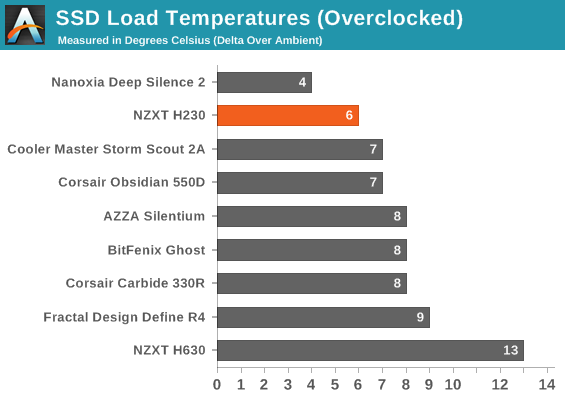
Overclocked thermals are pretty dire on almost every front but the SSD, which gets a healthy amount of totally unneeded cooling. The GTX 560 Ti and i7-2700K were both hitting temperatures well into the 90s, with the cores of the 2700K hitting as high as 98C in a 24C ambient room.

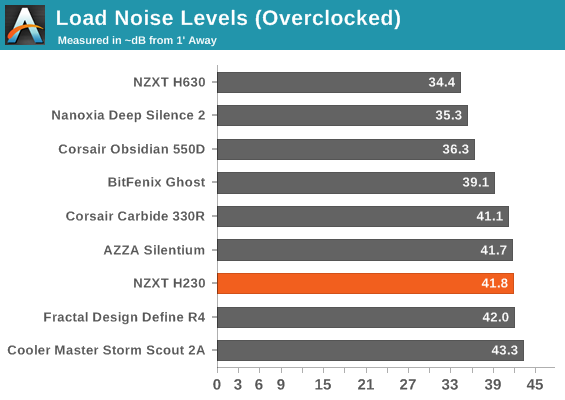
Noise levels go to hell right along with the thermal performance. The NZXT H230 was already having trouble keeping its components cool at stock speeds, bumping up stress just makes things worse.
To satisfy morbid curiosity, here are the test results from the full fat testbed, which goes well beyond the ~320W our overclocked testbed generates.
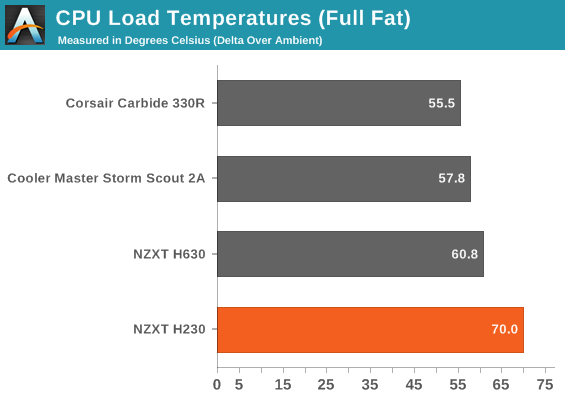
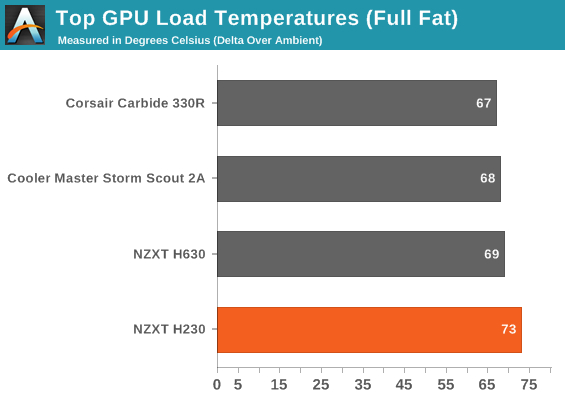
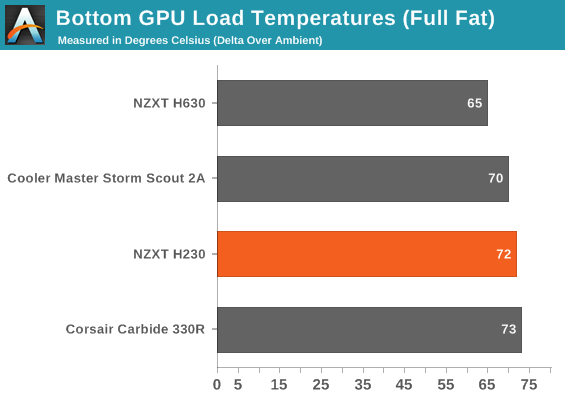
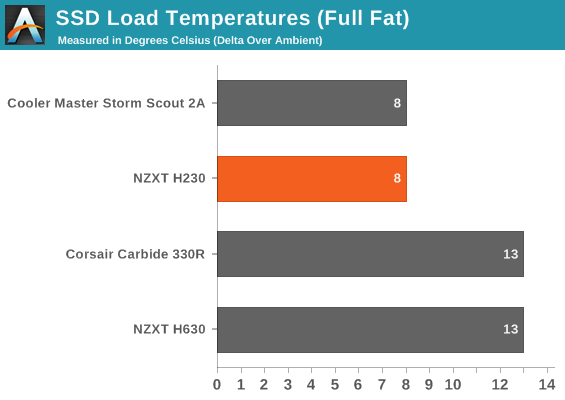
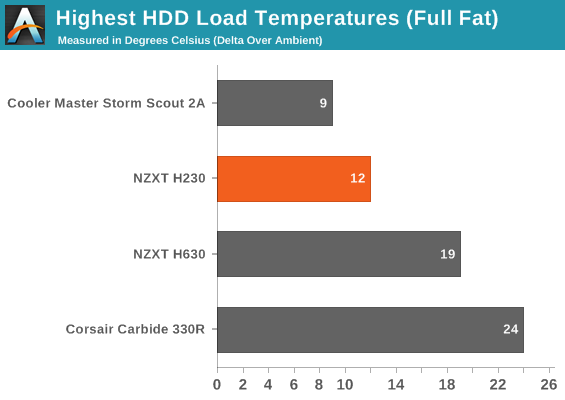
At least the storage is running cool?
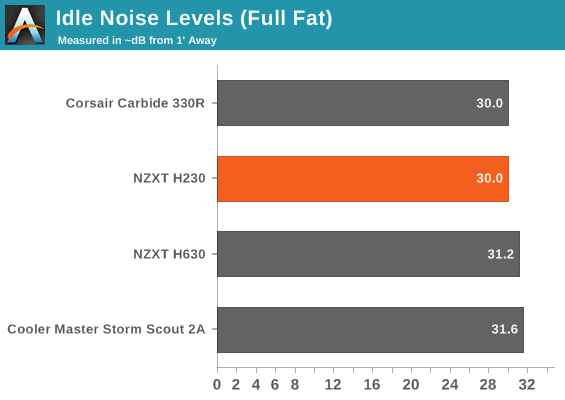
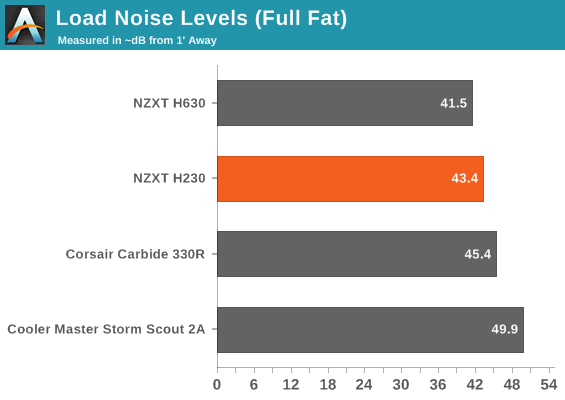
The H230 does some work containing the noise as its internals roast, but it should be abundantly clear at this point that this is not a case suited to even upper high end hardware. Those of you planning on using this for your AMD FX-9590 build will have to look elsewhere.










29 Comments
View All Comments
ghitz - Monday, September 16, 2013 - link
Totally agree. 1/3rd of the space of common mITX cases is for the unnecessary large standard ATX PS. We need a new standard.Barbarossa - Sunday, September 15, 2013 - link
You might be right, but standard ATX mid towers and full towers still account for more than 3/4 of all case sales. Mini ITX and Micro ATX are growing, but slowly. It's a bit of chicken and egg scenario, though.Why build Micro ATX system if all the cool cases are ATX or larger? And then once you've already got the case and nothing's wrong with it, when you decide to upgrade, why limit yourself to Micro ATX or smaller?
Don't get me wrong - I think a lot of people are buying smaller PCs, and it's more and more each year, but the vast chunk of the DIY market is still buying standard or full tower cases.
-George @ Corsair
ghitz - Monday, September 16, 2013 - link
Most of them end up being mostly empty.Grok42 - Tuesday, September 17, 2013 - link
I've looked a lot for good stats on that the ATX, mATX and mITX market numbers. Very interesting to know it's still highly skewed toward ATX. I would love to read an article on where the market is and where it appears to be going. I certainly put 100% of the blame for the current emphsis on ATX at the feet of consumers and not companies like Corsair.Dentons - Friday, September 13, 2013 - link
Why not Fractal Design's R4?It's often discounted to the same price as this and was very well reviewed here. It's available from Amazon, Newegg, Microcenter and others. The Nanoxia is very difficult to recommend, not only because of its price, but because it's so hard to find a reseller stocking it.
meacupla - Friday, September 13, 2013 - link
My thoughts exactly.H230 looks exactly like a Define R4, except done worse in every conceivable way...
I would rather pay the extra $10~20 for an R4.
Touche - Saturday, September 14, 2013 - link
You really need to improve your noise floor. There are significant idle noise differences that aren't showing up in your tests.kevith - Saturday, September 14, 2013 - link
For a brief walkthrough and a quick summary, AT´s case reviews are absolutely fine, often with a subtle humor, nice to read.For the in-depth review with an extra emphasis on noise, go to SPCR.
EnzoFX - Saturday, September 14, 2013 - link
This. It's surprising actually since the rest of Anandtech is so thorough. Stark contrast.Barbarossa - Sunday, September 15, 2013 - link
That's easier said than done though. It's not like you can just add some foam to your walls and drop the sound level. Especially if you're reviewing from an apartment or townhouse or something.